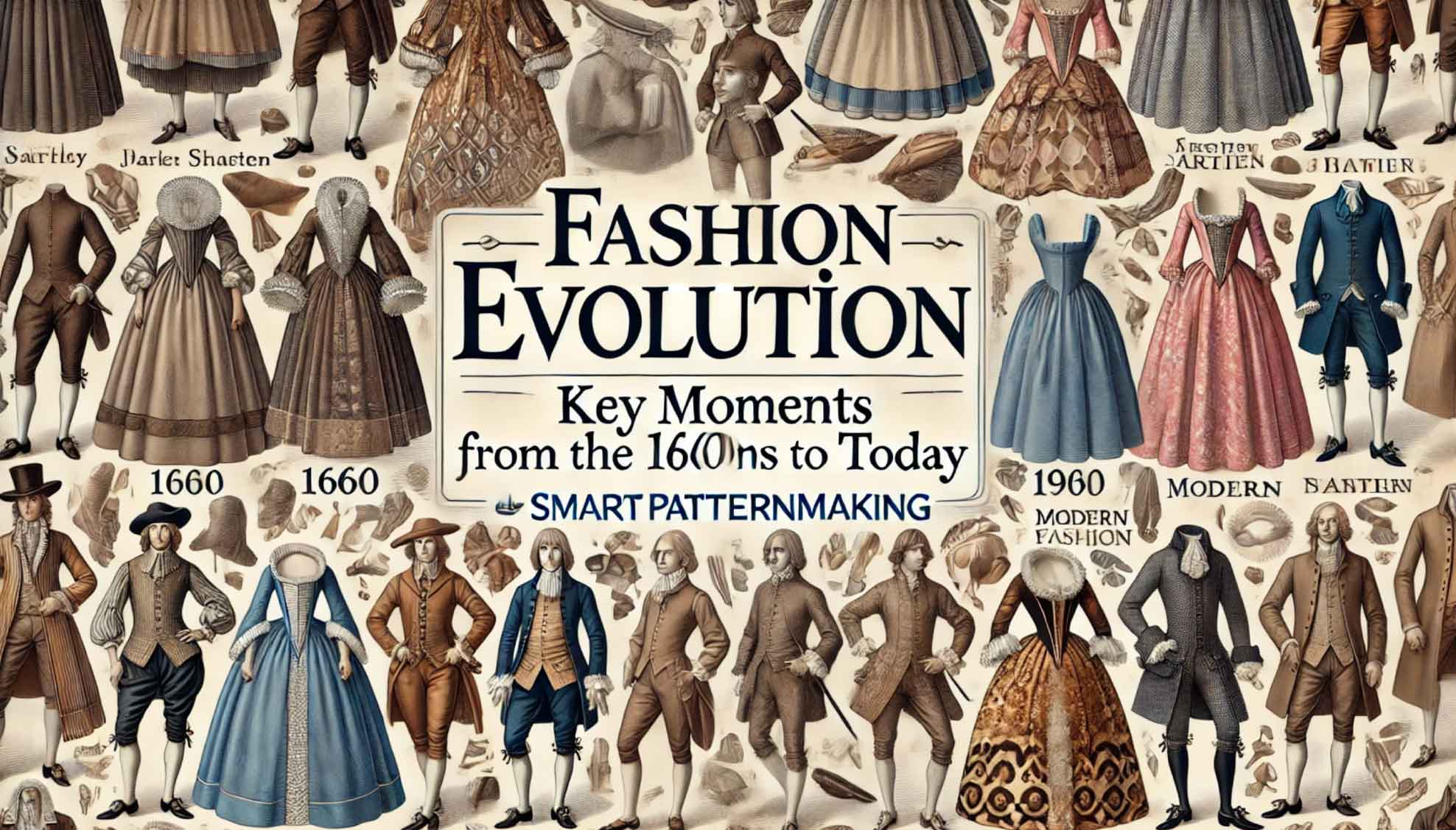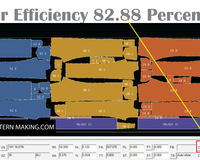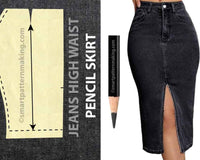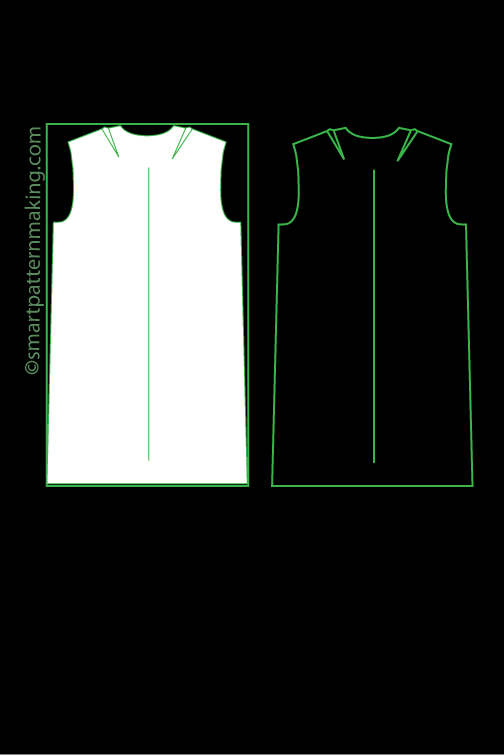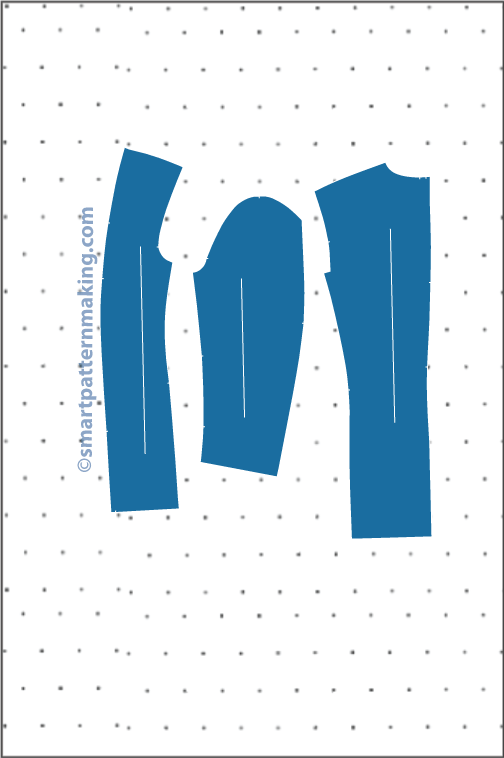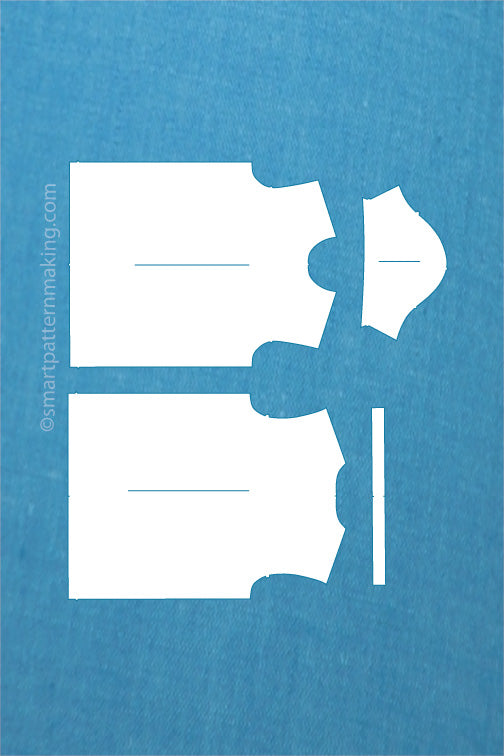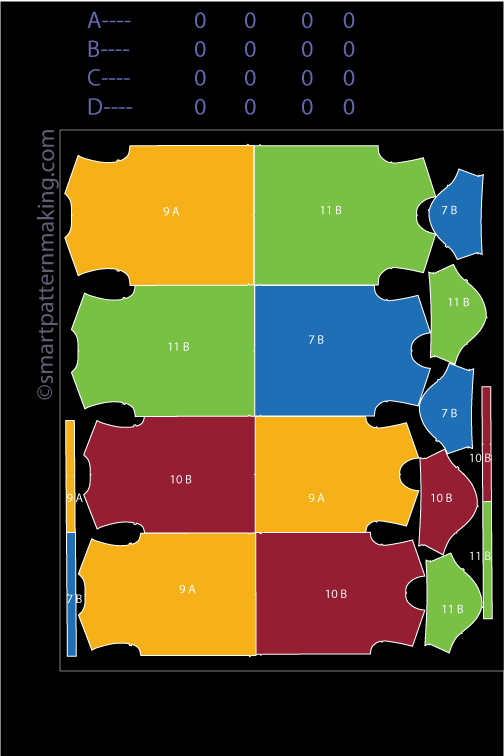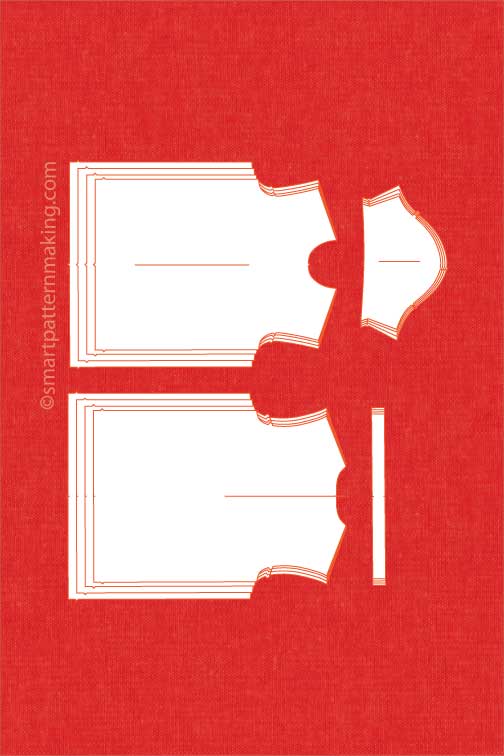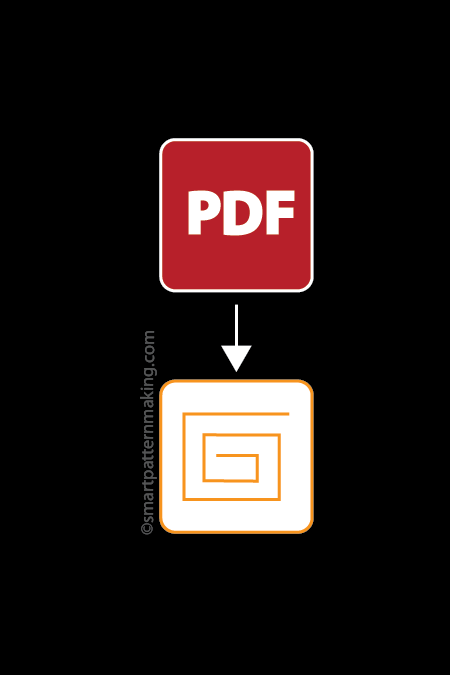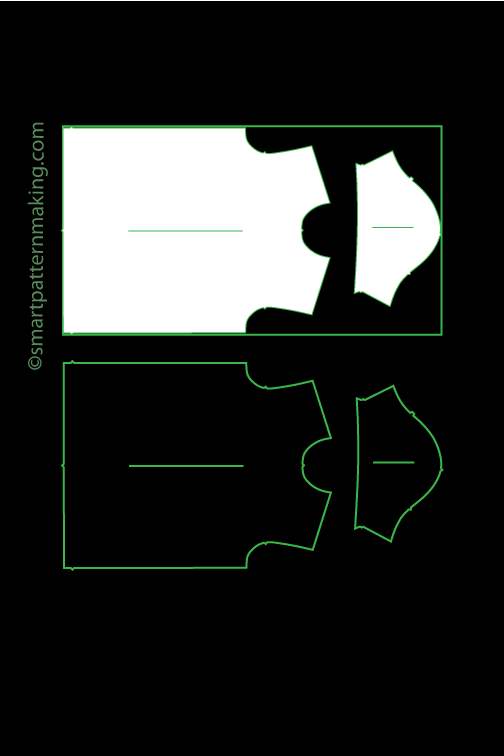Introduction
Fashion Evolution: Key Moments from the 1600s to Today is a journey through time, exploring the rich history of fashion across centuries. From the elaborate garments of the 1600s to the cutting-edge designs of today, fashion has always been a reflection of cultural shifts, technological advancements, and societal changes. This guide offers a comprehensive look at the most significant fashion trends and innovations that have shaped the way we dress, decade by decade. Whether you’re a fashion enthusiast, a student of design, or simply curious about how styles have evolved, this exploration provides valuable insights into the ever-changing world of fashion.
1600s: Baroque Elegance
The 17th century embraced Baroque fashion history characterized by opulence and grandeur. Women wore voluminous skirts, ruffled collars, and elaborate embroidery, while men sported doublets, breeches, and broad-brimmed hats with feathers. Lace and rich fabrics like silk and velvet were popular, and the intricate detailing symbolized wealth and status. The era also saw the rise of the corset as a staple in women’s fashion houses.
Key Features:
- Women's Fashion: Voluminous skirts were often supported by panniers to create a wide silhouette. Ruffled collars, known as "ruffs," added dramatic flair. Embroidery was intricate and detailed, often depicting floral or nature-inspired motifs. Corsets were tightly laced to cinch the waist and create a distinct hourglass figure.

- Men's Fashion: Doublets were padded and fitted jackets that were worn over a shirt. Breeches were knee-length trousers fastened with buckles or buttons. Broad-brimmed hats, often adorned with feathers, completed the ensemble. Lace was commonly used in collars and cuffs, and rich fabrics such as silk and velvet indicated wealth and status.

- Cultural Influence: Baroque fashion reflected the grandeur and opulence of the period, influenced by the lavish lifestyles of European courts. The intricate designs and luxurious materials symbolized power and wealth, while the rise of the corset highlighted changing ideals of beauty and femininity.
1700s: Rococo and Revolution
The 18th century was marked by extravagant Rococo fashion with elaborate gowns for women and embroidered waistcoats for men. Pastel colors, floral patterns, and excessive use of lace were hallmarks of this period. By the late 1700s, the French Revolution brought simpler, more practical clothing, marking the end of extravagant displays of wealth. The influence of Marie Antoinette was significant, as she popularized the pouf hairstyle and lavish dresses before the revolution prompted a shift to more democratic styles.
Key Features:
- Women's Fashion: Early 1700s fashion was extravagant with Rococo styles featuring elaborate gowns, embroidered waistcoats, and pastel colors. Late 1700s fashion became simpler and more practical due to the French Revolution.

- Men's Fashion: Early 1700s fashion included embroidered waistcoats and knee-length breeches. The French Revolution led to more practical and simpler clothing styles for men.

- Cultural Influence: The 1700s saw a transition from opulence to practicality influenced by political changes, especially the French Revolution. The fashion of the period reflected societal shifts and the move towards more democratic clothing styles.
1800s: Regency and Victorian Eras
The early 1800s, known as the Regency era, saw women in high-waisted, empire-line dresses. Men wore tailcoats, waistcoats, and breeches. The simplicity of Regency fashion was influenced by classical antiquity. As the century progressed, Victorian fashion emerged with corsets, crinolines, and bustles for women. The Industrial Revolution enabled mass production of clothing, making fashionable attire more accessible. Men’s fashion remained conservative with frock coats and top hats. The Victorian era also introduced mourning attire, which became popularized after the death of Prince Albert.
Key Features:
- Women's Fashion: Regency Era: High-waisted, empire-line dresses were influenced by classical antiquity. Victorian Era: Corsets, crinolines, and bustles were popular, reflecting the conservative and structured styles of the time.

- Men's Fashion: Regency Era: Tailcoats, waistcoats, and breeches were common. Victorian Era: Frock coats, top hats, and mourning attire became fashionable, influenced by the Industrial Revolution and societal norms.

- Cultural Influence: The 1800s reflected societal norms and the impacts of the Industrial Revolution. The shift from Regency simplicity to Victorian complexity highlighted changes in fashion and social structures.
1900s: The Edwardian Era
The 1900s were characterized by the S-shape silhouette for women, with day dresses covering from neck to floor. Evening gowns had low décolletage and short sleeves. The Edwardian era also saw the advent of the "Gibson Girl" look, representing the idealized modern woman of the time. Sports influenced practical styles for both genders, and the rise of the automobile led to specialized motoring fashion.
Key Features:
- Women's Fashion: The S-shape silhouette defined women's fashion, with day dresses covering from neck to floor and evening gowns featuring low décolletage and short sleeves. The "Gibson Girl" look became popular, embodying the idealized modern woman.

- Men's Fashion: Practical sportswear influenced men's fashion, with styles designed for activities like golf, tennis, cycling, and motoring. The rise of the automobile led to the creation of specialized motoring fashion.

- Cultural Influence: The Edwardian era reflected increased participation in sports and outdoor activities. Technological advancements, like the automobile, influenced fashion, making it more practical and specialized.
1910s: The Rise of Natural Silhouettes
The 1910s saw a shift to more natural forms with designers like Paul Poiret leading the way. Empire dresses returned, and Orientalism influenced fashion, bringing in elements like harem pants and turbans. World War I necessitated practical, utilitarian clothing. Women's fashion became less restrictive, and styles like the hobble skirt briefly became popular before the war emphasized functionality.
Key Features:
- Women's Fashion: Natural silhouettes became popular, with empire dresses returning to fashion. Oriental influences, such as harem pants and turbans, were introduced. Practical and utilitarian clothing became essential due to World War I.

- Men's Fashion: Practical and utilitarian clothing was necessary for men, influenced by World War I. Military-inspired styles and functionality were key aspects of men's fashion.

- Cultural Influence: The 1910s were marked by practicality and global influences, reflecting the impact of World War I on fashion. The introduction of natural silhouettes and Oriental elements highlighted changing aesthetics and cultural exchanges.
1920s: The Flapper Era
The 1920s introduced the flapper look with boyish silhouettes and knee-length hemlines. Coco Chanel popularized this style, promoting comfort and simplicity. The decade also saw the rise of sportswear and the democratization of fashion, making stylish clothing more accessible to the masses. The jazz age influenced fashion with its emphasis on movement and freedom.
Key Features:
- Women's Fashion: The flapper look featured boyish silhouettes and knee-length hemlines, promoting comfort and simplicity. Coco Chanel was a key figure in popularizing this style. Sportswear became more accepted for women, and the democratization of fashion made stylish clothing more accessible.

- Men's Fashion: Men's fashion in the 1920s was simpler and more accessible, influenced by jazz culture and the rise of sportswear. Practical and comfortable styles became popular.

- Cultural Influence: The 1920s were marked by post-war liberation and the rise of women's independence. The jazz age and the democratization of fashion influenced clothing styles, making them more accessible and comfortable.
1930s: Hollywood Glamour
The 1930s featured feminine silhouettes and the bias cut, which allowed fabric to cling to the body in elegant drapes. Hollywood stars like Greta Garbo influenced fashion, and the silver screen became a major driver of trends. The Great Depression led to more practical designs, with an emphasis on making clothes last longer. The decade also saw the introduction of synthetic fabrics like rayon.
Key Features:
- Women's Fashion: Feminine silhouettes and the bias cut defined women's fashion in the 1930s. Hollywood glamour influenced styles, with elegant drapes and practical designs becoming popular. The introduction of synthetic fabrics like rayon also impacted fashion.

- Men's Fashion: Men's fashion in the 1930s was practical and simple, with an emphasis on durability due to the Great Depression. Hollywood style influenced men's clothing, making it more glamorous and elegant.

- Cultural Influence: The 1930s were marked by Hollywood's influence and the economic challenges of the Great Depression. Practicality and elegance defined fashion, reflecting the cultural and economic context of the decade.
1940s: Utility and Innovation
World War II brought practical fashion with padded shoulders and cinched waists. Fabric rationing led to the popularity of utility clothing, which was functional and resourceful. After the war, Christian Dior's "New Look" in 1947 celebrated post-war femininity with full skirts and cinched waists, marking a return to opulence and luxury in fashion. The invention of the bikini by Louis Réard in 1946 also revolutionized swimwear.
Key Features:
- Women's Fashion: Practical utility clothing with padded shoulders and cinched waists was essential during World War II. Christian Dior's "New Look" celebrated post-war femininity with full skirts and cinched waists. The bikini invention by Louis Réard revolutionized swimwear.

- Men's Fashion: Men's fashion in the 1940s was military-inspired, with practical and functional styles becoming popular. Utility clothing was essential due to fabric rationing during the war.

- Cultural Influence: The 1940s were marked by war-time practicality and post-war celebration of femininity. Utility clothing and the "New Look" reflected the cultural shifts of the decade, highlighting the impacts of World War II on fashion.
1950s: Elegant Femininity
The 1950s featured elegant, feminine silhouettes with an emphasis on the hourglass figure. Dior's "New Look" remained popular, while designers like Balenciaga introduced new shapes like the Sack dress, which offered a contrast to the cinched waist. Coco Chanel reintroduced her signature slim look with boxy jackets and straight skirts. The decade also saw the rise of youth culture and the beginnings of the rock 'n' roll influence on fashion.
Key Features:
- Women's Fashion: Elegant silhouettes with an emphasis on the hourglass figure were popular. Dior's "New Look" and Balenciaga's Sack dress were key styles. Coco Chanel's slim look with boxy jackets and straight skirts became fashionable.

- Men's Fashion: Men's fashion in the 1950s was conservative and classic. The rise of youth culture and rock 'n' roll began to influence styles.

- Cultural Influence: The 1950s were marked by post-war prosperity and the rise of couture fashion. The influence of youth culture and rock 'n' roll began to shape fashion trends.
1960s: Youth and Rebellion
The 1960s embraced youth culture with miniskirts and androgynous styles by designers like Mary Quant. Futuristic fashion emerged with space-age materials and designs. The late 60s saw the rise of the hippie aesthetic, characterized by free-spirited and eclectic styles. This era also witnessed significant cultural revolutions that influenced fashion, such as the civil rights movement and the sexual revolution.
Key Features:
- Women's Fashion: Miniskirts and androgynous styles became popular, with designers like Mary Quant leading the way. Futuristic fashion emerged, featuring space-age materials and designs. The hippie aesthetic, characterized by free-spirited and eclectic styles, gained popularity.

- Men's Fashion: Men's fashion in the 1960s was casual and experimental, influenced by youth culture and space-age designs. The hippie movement also influenced men's styles.

- Cultural Influence: The 1960s were marked by youth rebellion and significant cultural revolutions. Fashion reflected the changing social landscape, with influences from the civil rights movement and the sexual revolution.
1970s: Hippie to Disco
The 1970s mixed hippie styles with glamorous disco fashion. Diane Von Furstenberg's wrap dress became iconic, and sportswear gained popularity in women's fashion. The disco era brought bold and flashy styles with sequins, platform shoes, and bell-bottom pants. The decade was also characterized by a relaxed attitude towards fashion, with an emphasis on individual expression.
Key Features:
- Women's Fashion: Hippie styles and disco fashion were popular in the 1970s. Diane Von Furstenberg's wrap dress became iconic. Bold and flashy styles with sequins, platform shoes, and bell-bottom pants were in vogue.

- Men's Fashion: Men's fashion in the 1970s was relaxed and flamboyant,
- with influences from hippie and disco styles. Sportswear also gained popularity.

- Cultural Influence: The 1970s were characterized by social freedom and individual expression. The disco craze and sportswear trends shaped fashion, reflecting the cultural shifts of the decade.
1980s: Bold Individuality
The 1980s celebrated individuality with bold colors and extravagant styles. Power suits with padded shoulders became popular among working women. Japanese designers like Rei Kawakubo and Yohji Yamamoto introduced deconstruction and exaggerated proportions. The fitness craze influenced fashion with the popularity of spandex, leg warmers, and athletic wear.
Key Features:
- Women's Fashion: Bold colors and extravagant styles defined women's fashion in the 1980s. Power suits with padded shoulders became popular among working women. The fitness craze brought spandex, leg warmers, and athletic wear into fashion.

- Men's Fashion: Men's fashion in the 1980s was casual and eclectic, influenced by bold colors and the fitness craze. Spandex, leg warmers, and athletic wear were popular.

- Cultural Influence: The 1980s were marked by the rise of individual expression and global fashion influences. Japanese designers introduced new concepts like deconstruction and exaggerated proportions.
1990s: Minimalism and Grunge
The 1990s saw minimalism and casual styles. Grunge fashion featured loose-fitting jeans and flannel shirts. Supermodels dominated the early 90s, influencing fashion trends. The decade also witnessed the rise of streetwear and the popularity of athletic brands.
Key Features:
- Women's Fashion: Minimalist styles and grunge fashion were popular in the 1990s. Loose-fitting jeans and flannel shirts defined the grunge look. Supermodels influenced fashion trends, and streetwear became widely popular.

- Men's Fashion: Men's fashion in the 1990s was casual and laid-back, with a focus on athletic brands. Streetwear and minimalism were key trends.

- Cultural Influence: The 1990s were marked by the rise of streetwear and alternative fashion movements. Supermodels and athletic brands influenced fashion, reflecting the cultural shifts of the decade.
2000s: Fast Fashion and Tech Influence
The 2000s were marked by fast fashion and technology's influence. Boho, hip-hop, and athleisure dominated, reflecting diverse subcultures. Celebrities like Britney Spears, Paris Hilton, and Jennifer Lopez set the style. The rise of online shopping and fashion blogs also significantly impacted trends.
Key Features:
- Women's Fashion: Boho look, hip-hop styles, and athleisure wear were popular in the 2000s. Fast fashion made trendy clothing more accessible. Celebrities influenced fashion trends, and online shopping became widespread.

- Men's Fashion: Men's fashion in the 2000s was casual and sporty, with influences from hip-hop and athleisure. Fast fashion and online shopping also impacted men's styles.

- Cultural Influence: The 2000s were characterized by the rise of fast fashion, celebrity influence, and technology's impact on shopping and trends. Fashion blogs and online shopping changed how people engaged with fashion.
2010s: Social Media and Sustainability
The 2010s saw social media influencers and a return to maximalism. Designers like Alessandro Michele embraced bold colors. Sustainability became a key focus in fashion, with consumers demanding more eco-friendly practices. The decade also saw the rise of gender-neutral fashion and the inclusivity movement, promoting diversity on runways and in campaigns.
Key Features:
- Women's Fashion: Bold colors and maximalism defined women's fashion in the 2010s. Social media influencers set trends, and sustainability became a key focus. Gender-neutral fashion and inclusivity became important movements.

- Men's Fashion: Men's fashion in the 2010s was diverse and experimental, influenced by social media and sustainability. Gender-neutral styles gained popularity.

- Cultural Influence: The 2010s were marked by social media influence, sustainability, and inclusivity movements. Fashion reflected cultural shifts towards diversity and environmental consciousness.
2020s: Comfort and Revival
The 2020s prioritized comfort with activewear due to the Covid-19 pandemic. The decade also revived past trends like mini dresses and Y2K fashion. Sustainability remained crucial as the industry continued to address its environmental impact. Digital fashion shows and virtual try-ons became more common as technology advanced.
Key Features:
- Women's Fashion: Activewear, comfort clothing, and revival of past trends like mini dresses and Y2K fashion defined women's fashion in the 2020s. Sustainability continued to be a key focus.

- Men's Fashion: Men's fashion in the 2020s was casual and comfortable, with an emphasis on digital fashion. Technology influenced how fashion was presented and consumed.

- Cultural Influence: The 2020s were marked by the impact of the pandemic, the revival of past trends, and technological advancements. Fashion reflected the need for comfort and sustainability in a changing world.
Conclusion
Fashion is more than just clothing; it's a powerful form of expression that tells the story of our collective history. By tracing the evolution of fashion from the 1600s to the present day, we gain a deeper understanding of how our world has changed and how those changes are reflected in the way we dress. From the grandeur of royal courts to the simplicity of modern minimalism, fashion continues to influence and inspire. As we look to the future, we can only imagine what new trends and innovations will emerge. Thank you for joining us on this journey through the fascinating world of fashion evolution.
Table of Contents |
|---|
| • 1600s: Baroque Elegance |
| • 1700s: Rococo and Revolution |
| • 1800s: Regency and Victorian Eras |
| • 1900s: The Edwardian Era |
| • 1910s: The Rise of Natural Silhouettes |
| • 1920s: The Flapper Era |
| • 1930s: Hollywood Glamour |
| • 1940s: Utility and Innovation |
| • 1950s: Elegant Femininity |
| • 1960s: Youth and Rebellion |
| • 1970s: Hippie to Disco |
| • 1980s: Bold Individuality |
| • 1990s: Minimalism and Grunge |
| • 2000s: Fast Fashion and Tech Influence |
| • 2010s: Social Media and Sustainability |
| • 2020s: Comfort and Revival |
Influential Designers from Each Era
1600s: Baroque Elegance
- No specific designer names recorded
1700s: Rococo and Revolution
-
Marie Antoinette
Learn more: Marie Antoinette -
Rose Bertin
Learn more: Rose Bertin
1800s: Regency and Victorian Eras
-
Charles Frederick Worth
Learn more: Charles Frederick Worth -
Jean-Philippe Worth
Learn more: Jean-Philippe Worth
1900s: The Edwardian Era
-
Lucile (Lady Duff-Gordon)
Learn more: Lucile (Lady Duff-Gordon)
1910s: The Rise of Natural Silhouettes
-
Paul Poiret
Learn more: Paul Poiret
1920s: The Flapper Era
-
Coco Chanel
Learn more: Coco Chanel -
Jeanne Lanvin
Learn more: Jeanne Lanvin
1930s: Hollywood Glamour
-
Elsa Schiaparelli
Learn more: Elsa Schiaparelli -
Madeleine Vionnet
Learn more: Madeleine Vionnet
1940s: Utility and Innovation
-
Christian Dior
Learn more: Christian Dior -
Louis Réard (Inventor of the bikini)
Learn more: Louis Réard
1950s: Elegant Femininity
-
Cristóbal Balenciaga
Learn more: Cristóbal Balenciaga -
Coco Chanel
Learn more: Coco Chanel
1960s: Youth and Rebellion
-
Mary Quant
Learn more: Mary Quant -
André Courrèges
Learn more: André Courrèges
1970s: Hippie to Disco
-
Diane Von Furstenberg
Learn more: Diane Von Furstenberg -
Vivienne Westwood
Learn more: Vivienne Westwood
1980s: Bold Individuality
-
Rei Kawakubo
Learn more: Rei Kawakubo -
Yohji Yamamoto
Learn more: Yohji Yamamoto
1990s: Minimalism and Grunge
-
Marc Jacobs
Learn more: Marc Jacobs -
Helmut Lang
Learn more: Helmut Lang
2000s: Fast Fashion and Tech Influence
-
Alexander McQueen
Learn more: Alexander McQueen -
Stella McCartney
Learn more: Stella McCartney
2010s: Social Media and Sustainability
-
Alessandro Michele
Learn more: Alessandro Michele -
Stella McCartney
Learn more: Stella McCartney
2020s: Comfort and Revival
-
Virgil Abloh
Learn more: Virgil Abloh -
Gabriela Hearst
Learn more: Gabriela Hearst
Explore these designers to understand how they influenced the fashion trends of their respective eras.
Ready to start creating your own fashion and non fashion products? if so, Drop us a chat NOW and we’ll get you started!
Discover all of our Pattern Making, Digitizing, Resizing and Printing services all available to you and let our expert team create your next personal or business fashion products today!
Loved reading this article and founded valuable? If so, Show us some love and buy us a coffee! ☕ :)
Developing tools and creating valuable content takes a lot of hours of work and days of research so that you can have them at your disposal. Also, keeping the content you read (Ads FREE) and operating this website cost a lot of money. So please, consider supporting us, so that we might continue to provide you with more valuable tools, fresh content, and to continue offering you with the best services that you deserve!

